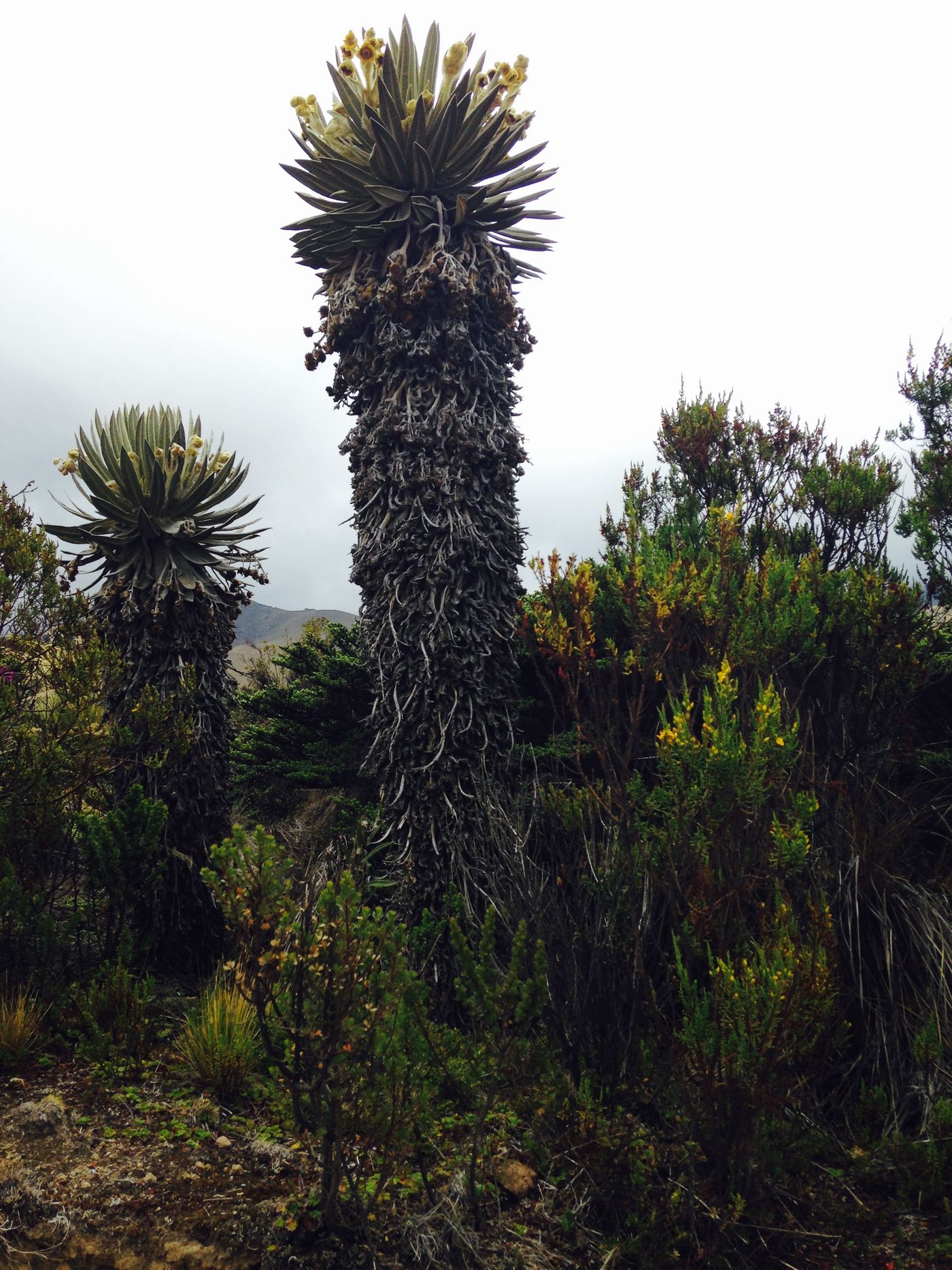Three days ago in the Boyacá department of Colombia, South America, wildfires swept throughout five municipalities, destroying hundreds of trees of the endemic species of frailejones, or
Espeletia, a genus of perennial subshrubs in the sunflower family that is native to Colombia, Venezuela, and Ecuador. The frailejón tree is found in high elevation páramo habitats, which are neotropical ecosystems above the continuous treeline yet below the permanent snowline. The habitat has also been referred to as alpine tundra that is specifically located in the Northern Andes of South America. The páramo biome vegetation consists of mainly shrubs, grasses, and giant rosette plants, such as the frailejón. With a thick, fuzzy trunk and yellow daisy-like flowers, frailejones are the spokes-plant species known within páramo habitats - perhaps for their truffula tree look, or for their key importance to the ecosystem in which they thrive.

Frailejones play a special role in capturing water vapor from passing clouds – of which there are many because of the habitat's high altitude. By trapping vapor in its sponge-like trunk and then transferring it to the soil through its roots, a single frailejón can vastly contribute to an ecosystem's water supply. The species is imperative for the formation of high-altitude lagunas and similar water deposits that create rivers which flow down the basins and supply hundreds of millions of people with clean water supplies.

Hence why the news from Boyacá is so devastating. According to a national Colombian television network, 90% of the hydraulic basin of the northern region of Boyacá was impacted by the forest fires. After three days of intense emergency, 150 people were able to control 95% of the fires that destroyed the Güina páramo, which lies close to a sector known as Colorados at the south of the Sativanorte municipality. The National Air Force teamed up with the Civil Defense and local farmers to attack the fires both from the air and the ground. However, despite the efforts of many, Oscar Medina, the volunteer who directed the efforts with the Civil Defense, says, “It is a devastating situation for our environment and hydraulic resources in this region. Hundreds of frailejones were destroyed and the fire displaced native fauna species such as deer, armadillo, and rodents. It has considerably affected the entire habitat.” After the ashes from the fire are under control, the department plans to send a commision to evaluate the level of disaster and organize a recuperation plan.
Although the origin of these particular fires is unknown, the majority of forest fires are started by human means.
Sources:
Caracol Radio,
Wikipedia










